Earlier this week I visited the Sei Boku Bonsai Kai to talk about display ahead of their annual exhibit in June. After running through the basics, we looked at member displays with an eye toward making improvements using the stands, trees, and accents we had on hand.
We started the exercise by having members set up their displays and then looked at alternative setups to see which we liked best. First up was an olive bonsai in a glazed blue oval.
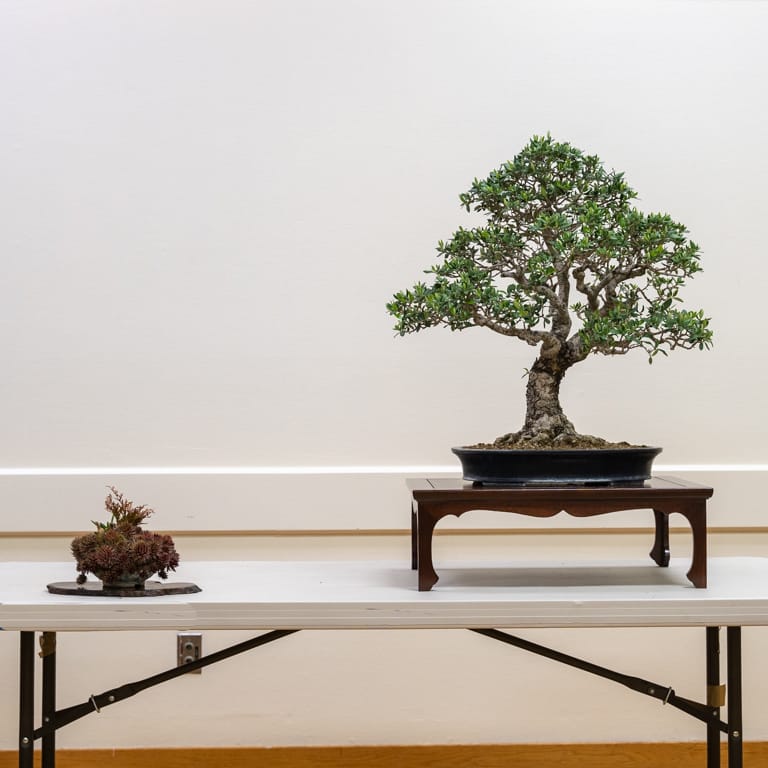
Olive – stand option 1
There was a second stand that was the right size in a different style so we gave it a try.
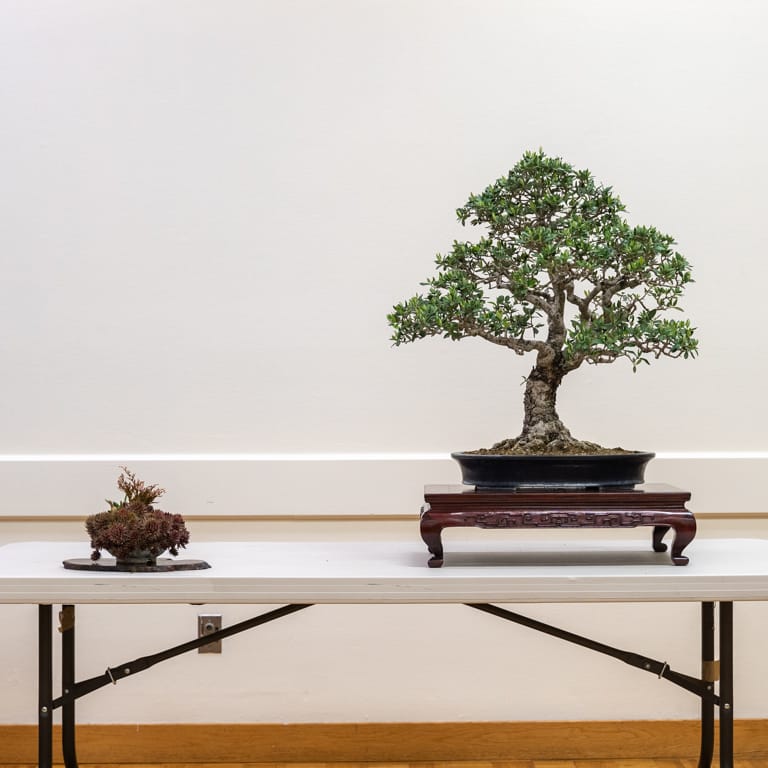
Stand option 2
The taller stand was the crowd favorite but we found it interesting that the red color in the second option made the foliage stand out more and the curved legs called attention to the curves on the sides of the pot. Were the taller stand unavailable, the shorter stand would be a good alternative.
Next up was an eleagnus.
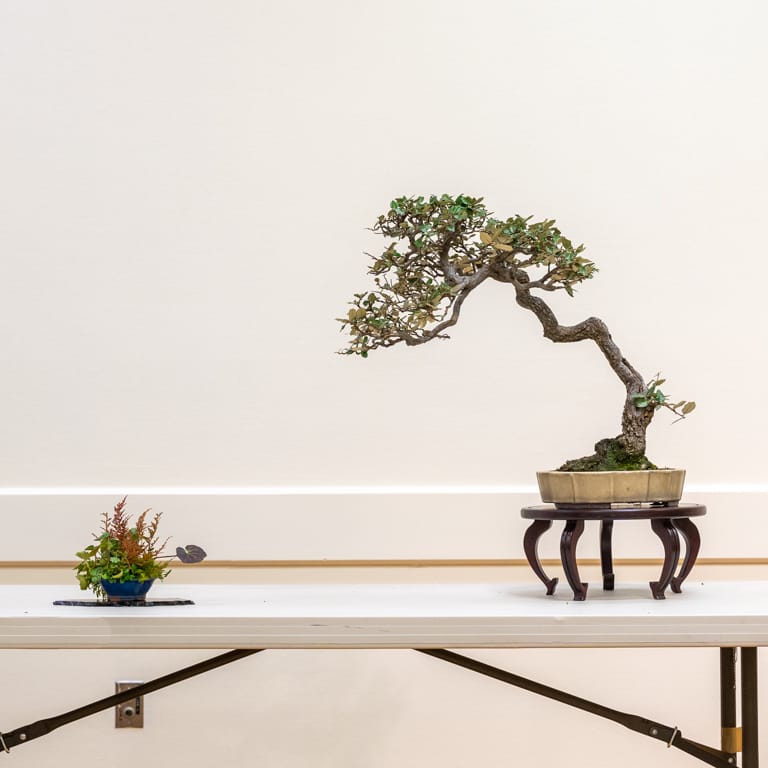
Eleagnus on a round stand
Round stands are a natural choice for tall, slender trees as they lift the relatively flat pots above the table.
That said, the next most popular choice for tall, slender trees is to place them on large slabs. This option is great if round stands aren’t available or the trees are simply too tall to appreciate when they are displayed atop a stand.
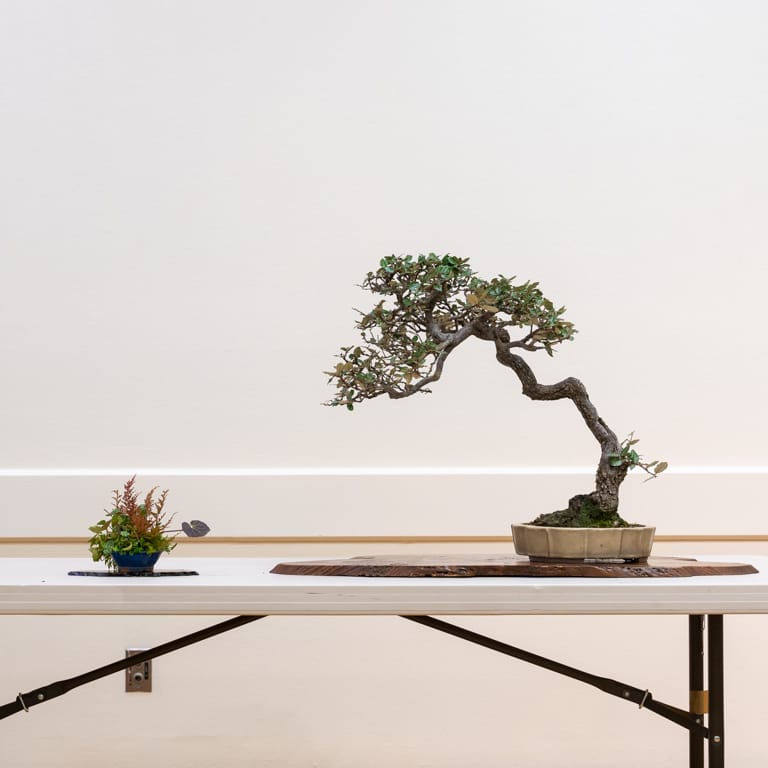
Eleagnus on a slab
In smaller spaces, it’s OK for the main tree and accent to sit on the same slab.
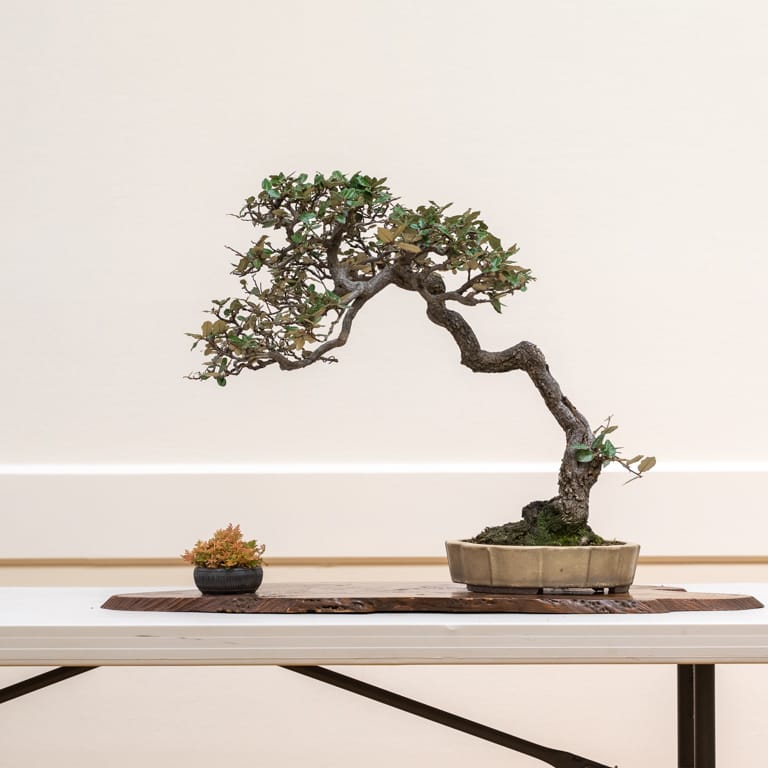
Eleagnus and accent sharing a slab
When it was time to display a shimpaku juniper in a geometric pot I was really curious to see which approaches would be my favorite. We started with a simple accent – a good choice if the goal is to keep the display simple.
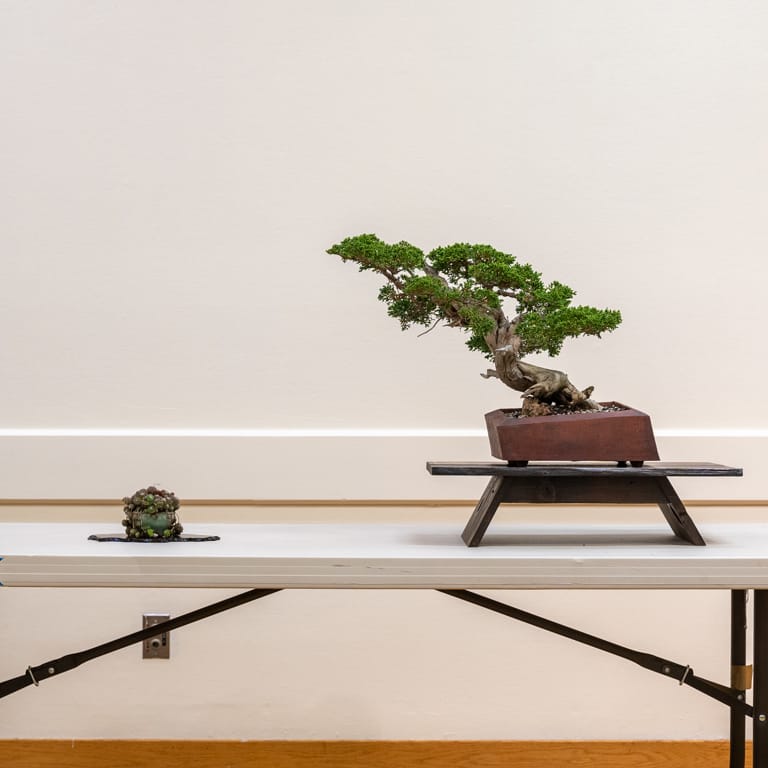
Shimpaku with small accent
Because the juniper is less than 18″ tall, we tried creating a three-point display by adding a second tree, a semi-cascade Japanese maple.
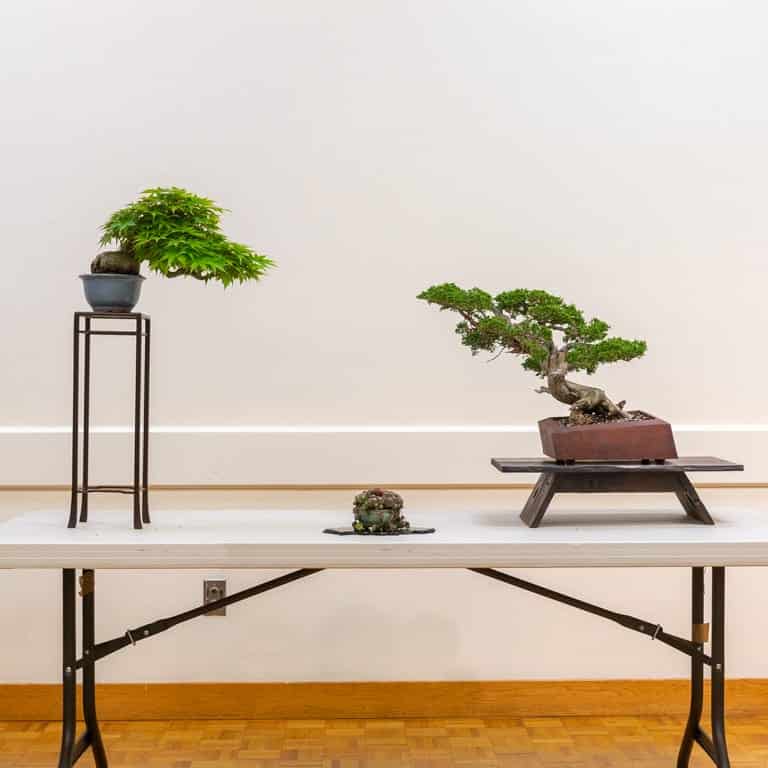
Three-point display with maple and shimpaku
I think creating a tree-point display is the best way to fill the six-foot display space for medium-sized trees, but the maple here clearly isn’t the best complement for the juniper. Not only is it too close in size to the juniper, but, and more importantly, it looks like the two are reaching out to touch each other which takes attention away from the main tree.
The last option we tried featured the juniper with a larger accent.
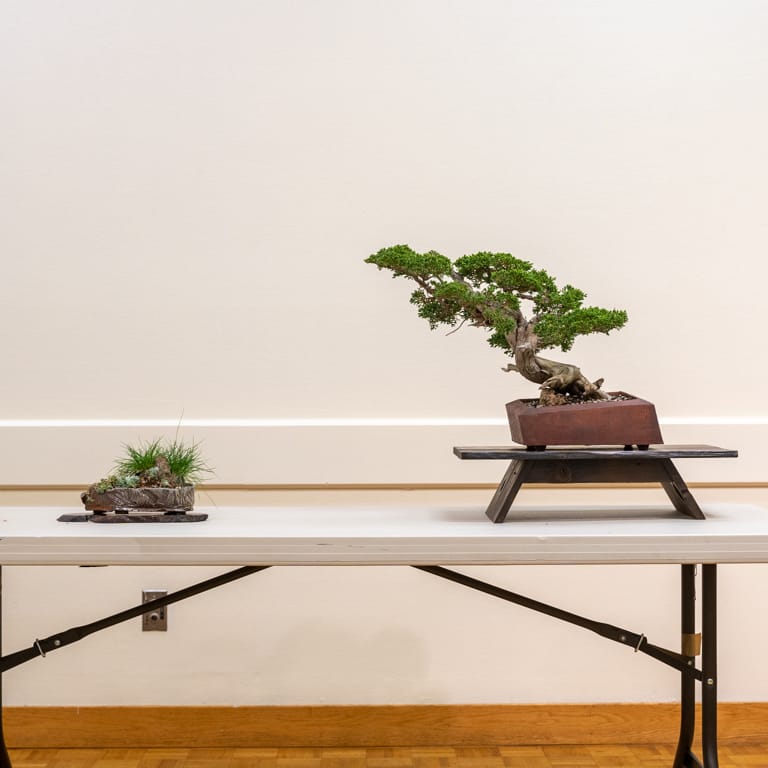
Juniper with larger accent
This option was popular as the larger accent suggested a landscape which made us think of the geometric container as a stand-in for a rock outcropping from which we might expect such a juniper to grow.
The last bonsai we looked at was a hawthorn forest. We started by looking at all of out accent options together.
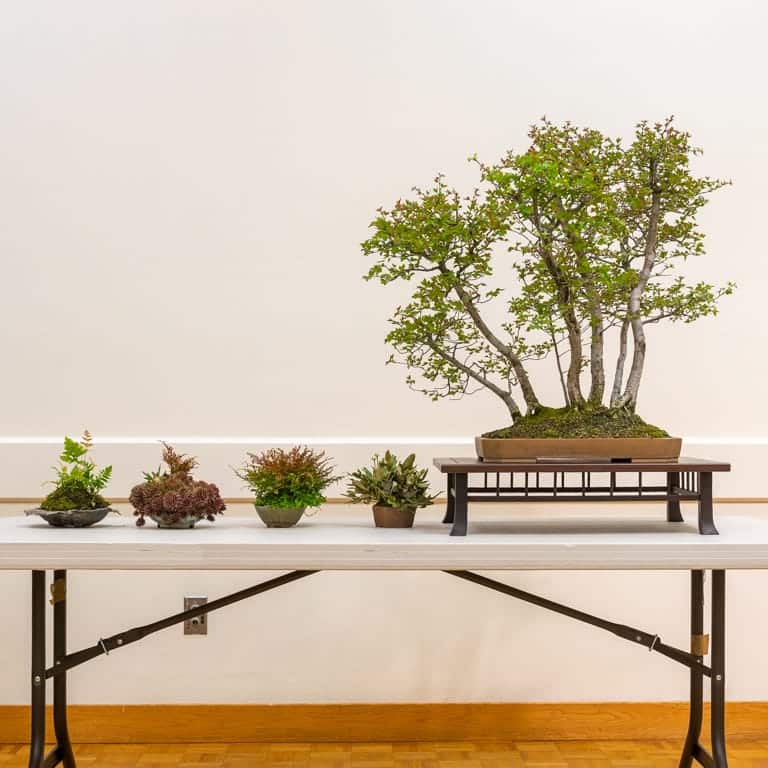
Hawthorn with accents
The first option we wanted to see was the red succulent as the color made a nice contrast to the hawthorn foliage.
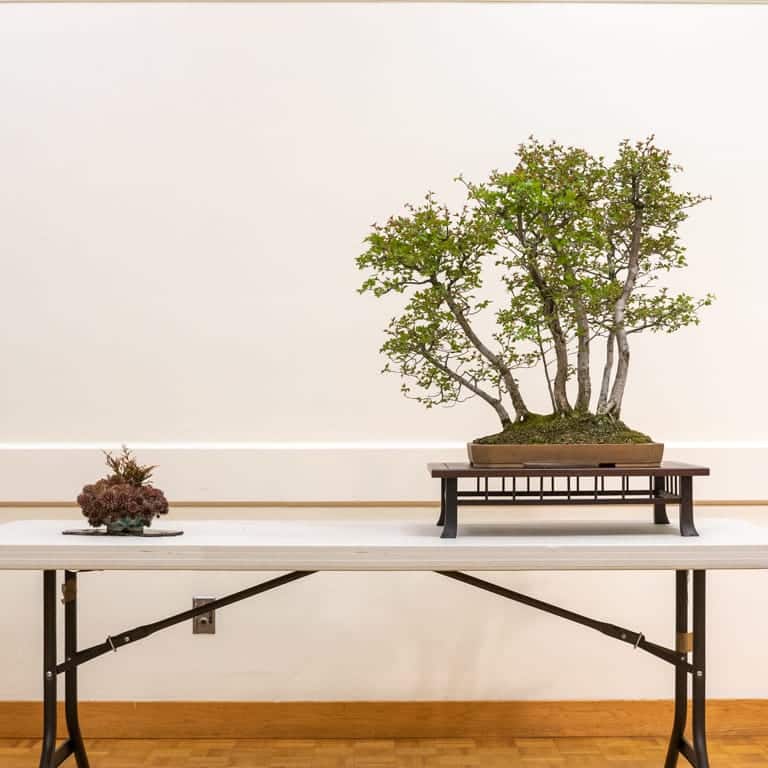
Hawthorn with succulent
While the color is good with this combo, the succulent struck some as heavy for a composition with slender trunks. That led us to try a fern on a mossy mound.
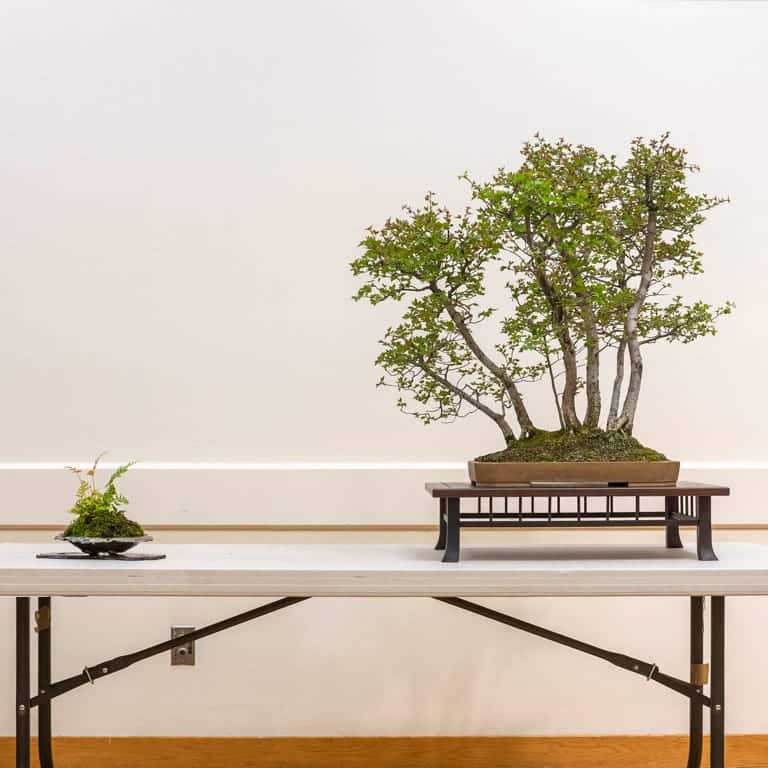
Hawthorn with fern
Most of the crowd preferred this option as the color variation in the fern foliage complemented the darker greens of the hawthorn while the moss reinforced the idea that we’re seeing a slice of a natural environment with hawthorns growing in it.
If we had more trees, stands, and accents available to us, we would have tried many more combinations to see which we preferred. But even when our options are limited, taking a few minutes when we set up displays can make a big difference or at least let us know if we need to find a new pot – or stand or accent for that matter.
Have any favorite combinations above? Let us know in the comments below.
News & Updates
We’re continuing to add new products and re-stock the Bonsai Tonight Online store this spring. Last week we noted that we have aluminum wire and cut paste back in stock. This week we have hundreds of books and limited soil available.
- Over 200 commemorative albums from Kokufu exhibits are now available. The Kokufu-ten is known as the best show in Japan and it’s a great resource for studying tree design or display. Find volumes from Kokufu 50 (1976) through Kokufu 95 (2021) in the Kokufu-ten exhibit book collection.
- We’ve also added a handful of catalogs from the Gafu-ten exhibition. Gafu-ten is Japan’s premier shohin exhibit. The catalogs from the event are great resources for studying shohin display. See limited volumes from Gafu-ten 21 (1996) through 37 (2012) in the Gafu-ten exhibit book collection.
- Both kanuma and akadama (normal hardness) are in stock now. See the Bonsai Soil collection for details.
Subscribe to Bonsai Tonight
New Posts Delivered Every Tuesday and Friday
Frank Wright says
I think a view rock with moss on it and placed on a small slab would be a great companion piece for any other non-stand tree. There is a lot of View Rock collectors that would like to show their collections, and with the moss added you still have the green content to add to the leaves.
Carol Greenfield says
To my eye, the round stand for the Eleagnus significantly detracted from the tree. I found the legs ungainly and discordant. It shows much better on either slab, though I prefer the look of it on its own slab with the first accent on separate slab.
Zack Clayton says
I have to agree on the stand for this tree. The composition looks as if its trying to get up and run away to the right.
Carmen Scott says
There is something about olive option 2 stand that draws me in. The little feet look like olives and the carved design panel complements the leaves and twiggy branches. The tree is tall and open on the top, but the spreading large nebari goes well with the structural weight of the lower stand. I have the same stand as option 1 and usually use it with a “lighter” bonsai. I love your postings critiquing display and pot selection. The nuances seem so subtle, but over time you can pick up some good insights.
Thomas Girardin says
I really enjoyed the opportunity to think outside the box in the setup ideas. I could not help being drawn to the table they were displayed on as the angle were a distraction. I would have cropped the photos to get rid of the table.